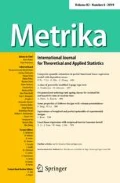Abstract.
Quantile regression is used to estimate the cross sectional relationship between high school characteristics and student achievement as measured by ACT scores. The importance of school characteristics on student achievement has been traditionally framed in terms of the effect on the expected value. With quantile regression the impact of school characteristics is allowed to be different at the mean and quantiles of the conditional distribution. Like robust estimation, the quantile approach detects relationships missed by traditional data analysis. Robust estimates detect the influence of the bulk of the data, whereas quantile estimates detect the influence of co-variates on alternate parts of the conditional distribution. Since our design consists of multiple responses (individual student ACT scores) at fixed explanatory variables (school characteristics) the quantile model can be estimated by the usual regression quantiles, but additionally by a regression on the empirical quantile at each school. This is similar to least squares where the estimate based on the entire data is identical to weighted least squares on the school averages. Unlike least squares however, the regression through the quantiles produces a different estimate than the regression quantiles.
Similar content being viewed by others
Author information
Authors and Affiliations
Rights and permissions
About this article
Cite this article
Bassett Jr., G., Tam, MY. & Knight, K. Quantile models and estimators for data analysis. Metrika 55, 17–26 (2002). https://doi.org/10.1007/s001840200183
Issue Date:
DOI: https://doi.org/10.1007/s001840200183




